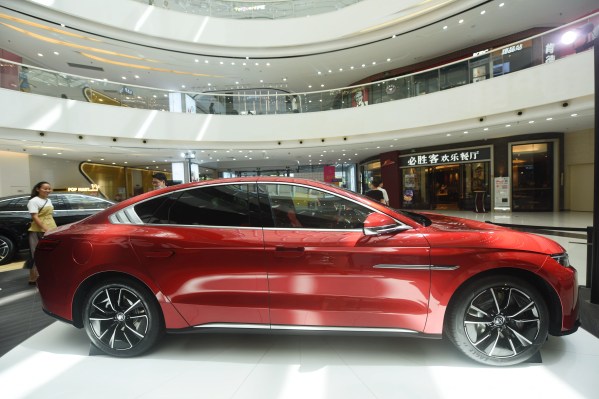Why LFP batteries are poised to bring down entry-level EV prices – TechCrunch


An older, cheaper and safer battery technology already dominating China’s electric vehicle industry is now poised to reshape battery manufacturing worldwide and boost EV sales in the United States — if the global lithium supply remains stable.
A slew of patents for lithium-iron-phosphate (LFP) chemistries due to expire in 2022 could shift the face of battery production in the U.S. and Europe.
China has owned the market for nearly a decade due to an agreement with patent holders — a consortium of universities in the U.S. and Canada — that let Chinese manufacturers use them to supply local markets. Meanwhile, manufacturers outside China have focused on developing other lithium-ion chemistries to power their EVs because their higher energy density translates into longer range on the road.
LFP already comprises 17% of the global EV market and represents a potential path for the mass market, according to the AlixPartners 2022 Global Automotive Outlook released Wednesday.
That’s because universal access to patents, coupled with the escalating prices of raw battery materials, is driving many automakers to home in on the advantages of iron-based batteries. To start, they cost less, don’t use scarce raw materials like cobalt and nickel, and are less likely to catch fire.
There have been warnings that a looming lithium supply shortage could cut the global EV sales forecast in 2030 to 25 million EVs, down from a projected 40 million, according to a report Tuesday from the Advanced Propulsion Centre, a partnership between the U.K. government and automakers.
However, that hasn’t appeared to stop the momentum toward LFPs. Even if a lithium bottleneck slows production, the battery chemistry remains easier to produce than the NMC (nickel-manganese-cobalt) the industry currently favors, as those metals are in short supply, too.
The same organization forecast that a quarter of EVs built in Europe will use LFP. Industry analysts have also become bullish on the prospect of LFPs, projecting that the iron-based batteries will power entry-level and cheaper vehicles, while nickel-based cells will be used for higher-end and performance cars.
LFP batteries could play a large role in the 250 battery-electric nameplates coming to the U.S. through 2030, according to Edgar Faler, senior industry analyst at the Center for Automotive Research. The chemistry is also well suited to the growing demand for light and medium commercial vehicles that can deliver goods in urban areas.
“For the foreseeable future, there’ll be a number of different chemistries competing to become the chemistry of choice,” Faler said.
Recent Posts
- Smaller businesses ‘more fearful and cautious’, Aito conference warned
- RK Janji Permudah Izin Dirikan Rumah Ibadah Semua Agama Jika Menang
- Colliers Quick Hits | From Travel Volumes to Labor Costs: 10 Trends Driving Hospitality Toward 2025
- Donald Trump watches SpaceX launch with Elon Musk, but test flight does not go as planned | US News
- Remaja Asal Bandung Jadi Korban TPPO di Saudi, Terlena Iming-iming Gaji
Recent Comments